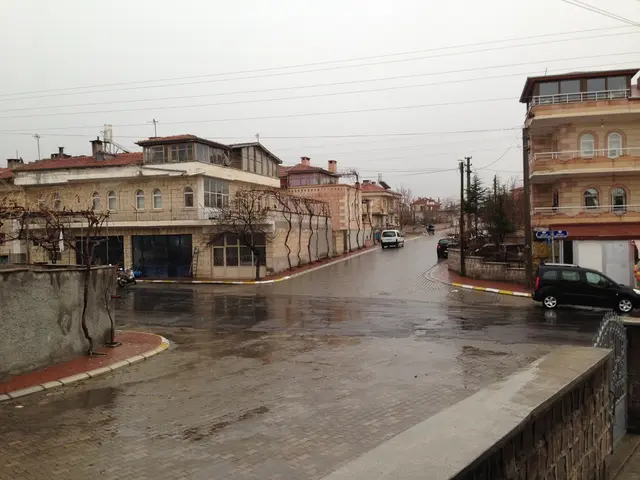Exploring the Origins and Explosion of 'Little Boy,' the First Atomic Weapon Deployed in War
The USS Indianapolis arrived at Tinian Island on July 26, 1945, marking a pivotal moment in history. The island, a strategic location for the U.S. military, would soon become the staging ground for a mission of immense significance.
On board the USS Indianapolis were the components of a weapon unlike any other - Little Boy, a gun-type nuclear weapon using uranium for its reactions. The Manhattan Project, a covert operation started before the U.S. officially entered World War II, was responsible for the development of this bomb. Conducted primarily at a lab in Los Alamos, New Mexico, the project's goal was to create "sufficiently spectacular" weapons.
Colonel Paul Tibbets, the pilot of the B-29 bomber that carried Little Boy, and U.S. Navy Captain William S. Parsons, tasked with assembling and loading the bomb onto the B-29, were key figures in this historic mission. Parsons assembled most of the bomb before take-off, with the crew completing it while en route to Hiroshima.
On August 6, 1945, Little Boy was dropped over Hiroshima, Japan. The explosive force of the bomb was equivalent to 15,000 tons of TNT, causing instant death to around 80,000 people and injuring another 35,000. The bomb detonated at 1,900 feet above the city, generating intense fires and radiation fallout.
The impact on Hiroshima was catastrophic. The bomb detonated about 580 meters above the city, destroying total structures within a radius of 1.6 km and causing fires over a much larger area. The ensuing "black rain" carried radioactive fallout, causing severe radiation burns and long-term health effects.
The bombings led to enormous immediate deaths and subsequent suffering due to radiation sickness. These events precipitated Japan’s surrender, ending World War II in the Pacific. The Manhattan Project's goal of creating "sufficiently spectacular" weapons was achieved, thereby avoiding a costly land invasion.
One chilling account of the event describes a victim, who was 850 feet away from the center of Little Boy's impact, being reduced to only a shadow by the tremendous heat.
The bombing of Hiroshima marked a turning point in human history, ushering in a new era of nuclear weapons and their devastating consequences. The Manhattan Project, with its complex operation involving multiple sites for uranium enrichment, plutonium production, and bomb assembly, played a crucial role in this historical event.
[1] National Museum of Nuclear Science & History. (n.d.). The Manhattan Project. Retrieved from https://www.nuclearmuseum.org/the-manhattan-project
[2] National Archives. (n.d.). The Manhattan Project. Retrieved from https://www.archives.gov/exhibits/american_originals_1400-1900/manhattan-project
[3] PBS. (n.d.). Hiroshima: 50 Years Later. Retrieved from https://www.pbs.org/wgbh/americanexperience/films/hiroshima/
[4] Smithsonian National Museum of American History. (n.d.). The Atomic Bomb. Retrieved from https://americanhistory.si.edu/collections/artifact/national-museum-american-history-atomic-bomb
[5] United States Holocaust Memorial Museum. (n.d.). The Atomic Bombings of Hiroshima and Nagasaki. Retrieved from https://www.ushmm.org/learn/articles/19976
[1] The Manhattan Project, a significant chapter in the history of science and technology, led to the development of nuclear weapons, most notably Little Boy. [2] This covert operation, conducted during World War II, also highlighted the potential medical-conditions, such as radiation sickness, associated with nuclear explosions.




